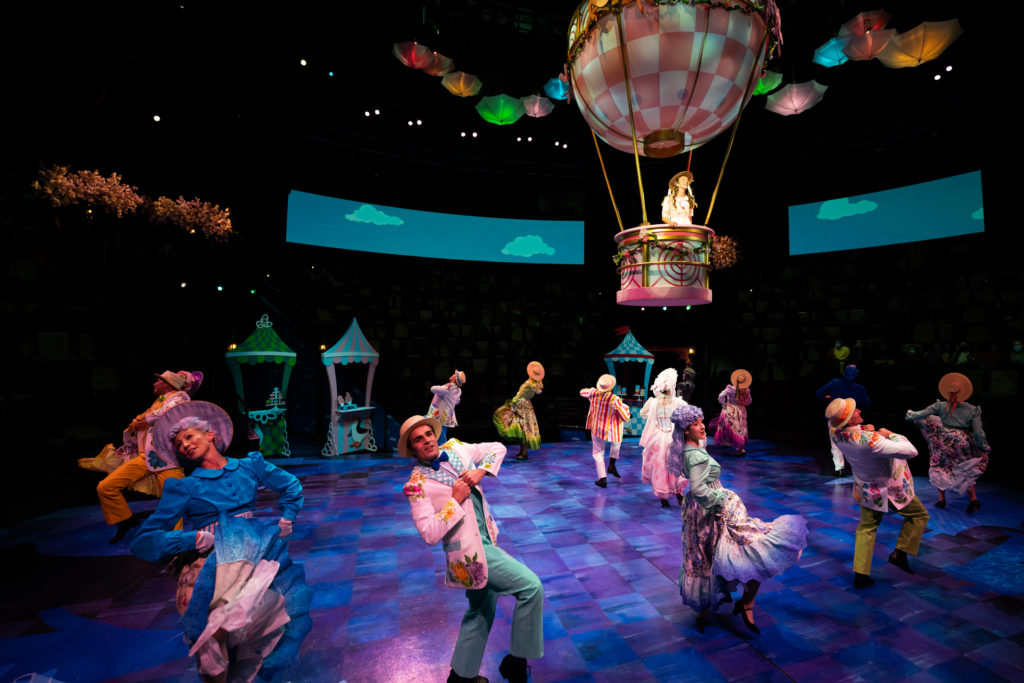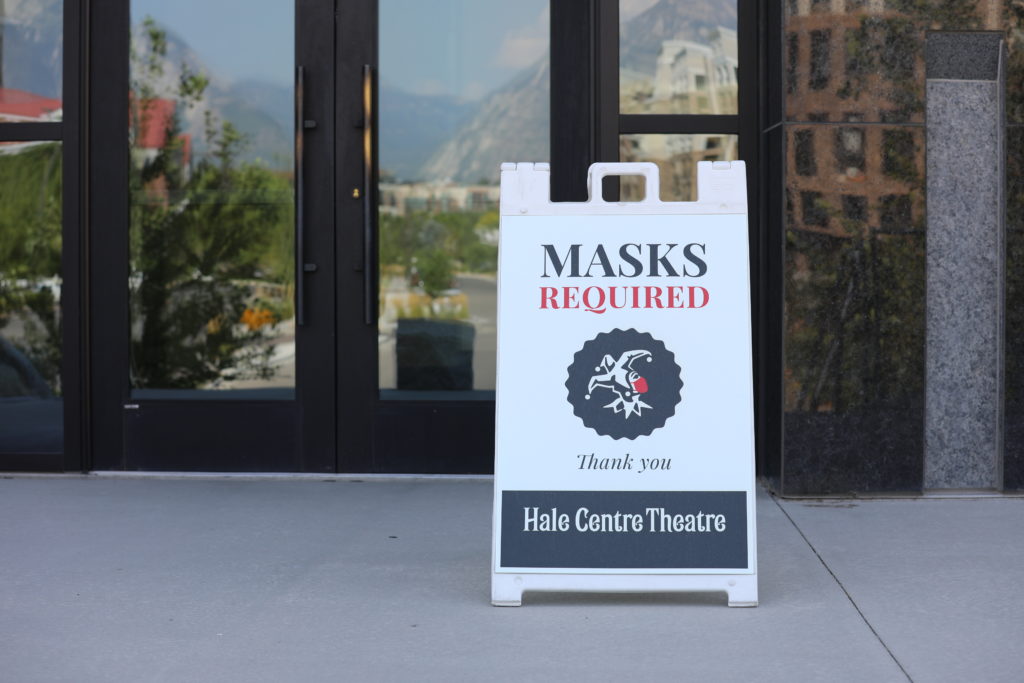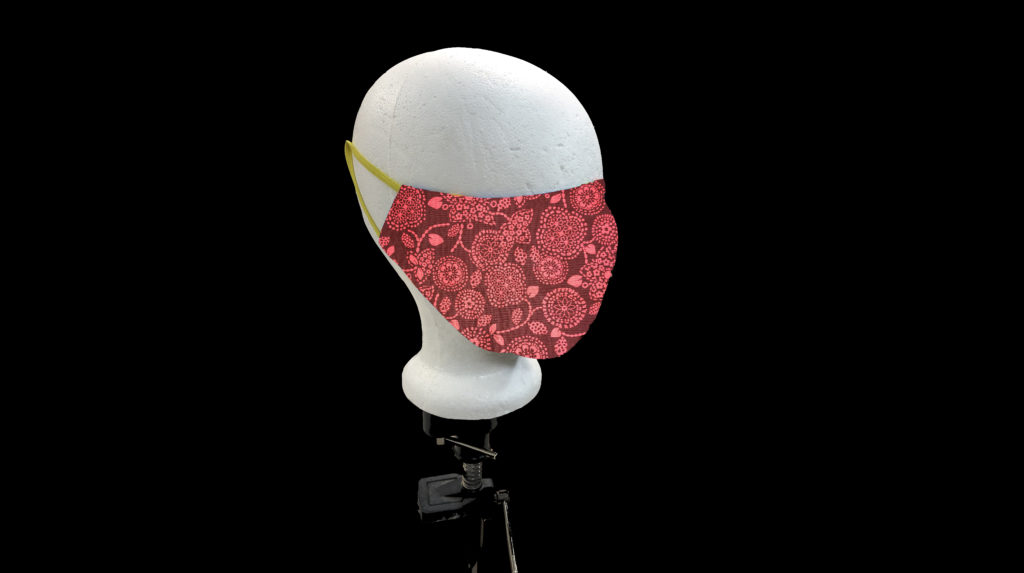Leer en español: Hora del espectáculo: Cómo el teatro en vivo está regresando a Utah

Fans view live theater as a chance to immerse themselves in the arts and escape from reality for a few hours. However, that all came to an abrupt halt in March of this year.
The COVID-19 pandemic forced Utah theaters to close their doors to the public for a period of time. Utah allowed for the reopening of theaters on May 16, as noted in its COVID-19 recovery plan, Utah Leads Together. After months of canceled shows, some Utah theaters have reopened; others, however, have chosen to postpone their seasons until 2021.
Economic impact
Theaters have been struggling to survive financially, with actors, crews and other employees out of work.
“I feel like right now we are recognizing that the heart and soul of live theater is going to disappear unless we all sort of come together and start figuring out some ways to help support these people during this time because there isn’t work,” said Karen Azenberg, the artistic director for Pioneer Theatre Company (PTC) in Salt Lake City.
PTC’s season typically runs from September through May. But due to the pandemic, this year’s shows are postponed to 2021, when PTC will offer a three-show season beginning in February.
Sandy’s Hale Center Theatre (HCT), Utah’s largest arts organization, closed its doors to the public on March 12.
“(More than) 150 part-time employees and approximately 80 actors associated with the running of shows had no work,” said Mark Dietlein, president and CEO of Hale Center Theatre. “Ten full-time employees were laid off. One full-time employee was furloughed.”
And the economic impact on Utah theaters has been vast, resulting in millions of dollars lost.
“Being closed for three-and-a-half months will take at least three years to recover from financially and set us back several million dollars,” Dietlein said.
Pioneer Theatre Company is also out millions, Azenberg said. Additionally, the Utah Shakespeare Festival, held annually in Cedar City, has lost $4 million in ticket revenue with a canceled season.
“This is no way to run a theater. We don’t ever want to do it again,” said Frank Mack, the executive producer for the Utah Shakespeare Festival. “But one thing that we’ve also discovered through all this is that it’s much harder not to produce plays than it is to produce plays.”
To reopen or not to reopen
Mack said they originally postponed the opening of the festival for 10 days before realizing things were more serious than they thought. They then completely redesigned the season including cutting down the number of shows and cutting sets, costumes and technical production. But it just wasn’t feasible.
“We were just determined. We wanted to do it, but it just became impossible and we had to cancel,” he said. “Right around mid-May, we announced that we had to cancel the 2020 season with great reluctance and sadness.”
Mack said since this year’s season canceled, they are planning to “come back in a big way” in 2021 — the festival’s 60th anniversary.
“It’ll be our first year back after having been closed for a year. And a lot of theater companies are kind of trying to come back small … (and) get back to where they left off in 2019 or early 2020,” he said. “We’re hoping a year from now we’ll be performing in just sort of the biggest, most fabulous way possible.”

Hale Center Theatre decided to resume its production of “Bright Star” on June 26 and open “Mary Poppins” on July 1, after they surveyed their patrons and found that 70% felt comfortable enough to come back.
“We respect that not everyone is ready to come back,” Dietlein said. “As Utah reopens its economy, we recognize our role as a theater to bring hope, relief and joy.”
Shortly after the opening of “Mary Poppins” at HCT, some of the members of the company tested positive for COVID-19, resulting in the cancellation of the show for two weeks. But the show is up and running again, and like patrons, actors are required to wear masks during rehearsals and off-stage during performances.
“The second they get off-stage, they get their masks on. It’s kind of humorous. I’ve watched on three different occasions when actors have forgotten that they’ve had their masks on and they come on stage with their masks,” Dietlein laughed.
Dietlein also noted that none of the more than 33,000 patrons that have attended Hale since its reopening has contracted the virus.
“We’re really pleased with that, and we’re very, very rigid on all of our requirements,” he said.
The future of live theater
Dietlein said they’ve been averaging about 70% capacity. All patrons attending Hale Center Theatre are required to wear masks until they exit the theater at the conclusion of the show — and ushers enforce that rule throughout the shows. Dietlein said their safety plan also includes a “strict cleaning regimen, social distancing in bathroom and box office lines, masks and gloves worn by all ushers and office personnel, plexiglass partitions and hand sanitizing stations.”
“The great majority of patrons who have come back to see shows at HCT are very excited to have the experience of seeing shows again and to have some sense of normalcy restored,” he said. “We make it easy for those who want to have a theater experience and we make it easy for those who need to stay home. We believe it will be quite some time before all patrons feel comfortable returning back to enjoy live entertainment.”
But Dietlein said he thinks Hale Center Theatre won’t return to full capacity until everyone who wants to has been vaccinated to prevent COVID-19.
Azenberg agreed that it’s going to be a while — most likely not until there is a vaccine — before patrons feel totally comfortable coming back to the theater. It’s also going to be a while before several actors have work again.
“There are professional artists who derive their living, pay their rent by doing this kind of work, who have no work for the foreseeable future,” she said. “And I’m not talking about weeks. I’m talking about months and months.”
Azenberg said it’s “heartbreaking” for her to see so many people who have invested their entire careers into theater to suddenly find themselves in a position of complete uncertainty regarding their employment.

“I think, right now in this country, that’s not really something people are talking about,” she said. “And I understand we’re in a giant pandemic, and there are a myriad of issues that need to be wrestled with right now. But these people are going to have to make choices about their lives in order to pay their rent and their mortgage and feed their families.”
Azenberg has tried to help people have work by rehiring some costume shop employees full-time to sew and sell masks — some of which are made from costumes from the theater’s most memorable shows — as well as repurposing other products to sell.
Though the future of live theater is uncertain, Azenberg said there are things everyone can do to support theaters now.
“If you have the means to obviously support them financially, absolutely. But, you know, if you don’t, and you can buy a mask, that’s great. If you can spread the word of what kinds of things theaters are doing, or artists are doing to help bridge the gap at this point, you know, I realize lots of people are in difficult times right now. But some of the support is also just about spreading the word.”




